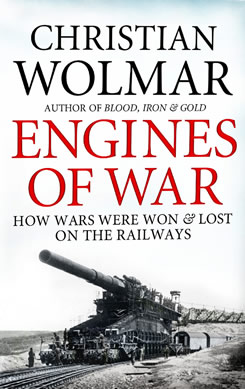
‘The Times they are a’changin’, but no one quite knows how. The ‘Command Paper’ which was supposed to set out ministerial thinking on the structure of Network Rail and was due out before Xmas is still, at the time of writing in mid-February, weeks away according to the latest pronouncement from Justine Greening, the now not so new Transport Secretary.
The delay is clearly the result of fundamental divisions within the Coalition about how far to go in changing or even breaking up Network Rail. The need for change is broadly accepted but precisely how far reform should go is a source of friction within government and concern within the industry.
There is widespread recognition that Network Rail became far too centralised when it was run by the previous Chief Executive, Iain Coucher, who left in October 2010. While it is easy to criticise that situation, it is undeniable that under Coucher, Network Rail corrected many of the ills of Railtrack and, as a result, managed to reduce costs. Ensuring, for example, common standards and practices across an industry that at times still retained legacies from British Rail days when local managers ruled with an iron rod over their territories was no bad thing. But as a former senior Network Rail source explained to me, ‘Coucher went too far and prevented local managers from having any initiative.’
So, anticipating, correctly, the recommendations of the McNulty report into the industry’s finances published last year, and without waiting for the government’s thinking on the future structure of the company, Network Rail has begun the process of devolving responsibilities to its route directors. They will have much more freedom in the way that they spend their budgets and allocated resources, but will still be required to maintain central standards and use common purchasing procedures for materials such as ballast and rails.
While this is fairly uncontentious, the next stage in Network Rail’s reform programme, the creation of alliances with train operators, is far more controversial because it is seen as a possible way of breaking up the organisation. This has already started. While cooperation over train operations in joint control centres has been going on for some time, this new move is focussed on the maintenance and renewal of the railway. Network Rail has already formed an alliance with South West Trains whereby decisions on renewals and enhancements will be taken jointly by the train operator and Network Rail. Indeed, in some cases Network Rail staff will report to SWT managers.
So, for example, is a section of line needs to be renewed, managers from both organisations will decided jointly both the scope and the timing of the work. As an inside source put it, ‘it is much more than just trying to sort out compensation arrangements. It’s about working together to save costs and improve performance’.
In truth, no one quite knows how these alliances will work out. Although work on new ones covering Anglia, Scotland, C2C, Northern and SouthEastern has been announced by Network Rail, none will go as far as the SWT arrangement. Moreover, the Office of Rail Regulation is concerned that other operators might be disadvantaged if relationship between a dominant train operator and Network Rail become too cosy.
There are worries that this process may not be workable and doubts about whether any reductions in cost will result in a cheaper railway or simply end up in the hands of private companies. Some managers feel that Network Rail has done well to reduce costs in the past decade and that there are not many more savings that can be made without compromising performance – or worse, though this is mostly never discussed, safety. There may well be some savings to be made through devolution, but there are doubts over whether working closely with train operators is really the way forward given that there is bound to be an issue about how to divvy up the savings. The Department for Transport, for example, is concerned that the savings don’t all end up with the train operator, who are privately owned, rather than Network Rail, which is largely state-funded. And what if there are disputes – how will they be resolved? At times, the interests of the two companies can become diametrically opposed since it is always easier to carry out track work when there are no trains running. No end of alliances and promises to ‘work together’ can get round that fundamental issue.
The biggest concern of the unions, however, is that this is a prelude to the break up of Network Rail. There are indeed some MPs on the Right of the Tory party who see Network Rail as an inefficient monopoly and would like to see the organisation split into several companies and the work quite possibly contracted out to firms like Serco. Having free standing vertically integrated routes operating independently of Network Rail’s HQ opens the way up to such a break-up.
While the idea of creating a series of mini Network Rails may appeal to ideologically-motivated politicians, there are numerous practical difficulties. There is scope, here, to create yet more interfaces in an industry where their prevalence was highlighted by McNulty as being at the root of much of the excessive cost. There are, too, economies of scale which suggest that breaking up Network Rail would simply add to these inefficiencies. Big equipment such as, for example, the Network Measurement Train, could not be purchased by a mini Network Rail operating on its own.
While such equipment could, possibly, be hired, there are bigger questions over labour and here the unions and the management of Network Rail are largely in agreement. The last thing either side wants is for fly-by-night contractors to be hired to carry out safety critical work on the railway. Certainly this is the basis of much scepticism among the unions about the move which they see not as a way of saving money but of allowing in less skilled workers on the cheap. While everyone is agreed that costs should come down, that should not be at the expense of losing the skilled workforce that is vital to keeping the railways running safely. Ms Greening’s Command Paper is, therefore, being awaited with some trepidation.
 "an excellent history of the usage of railway lines in conflict" - The Telegraph
"an excellent history of the usage of railway lines in conflict" - The Telegraph- Find out more
- Order yours today

No comments:
Post a Comment
Tell us your Railway News!